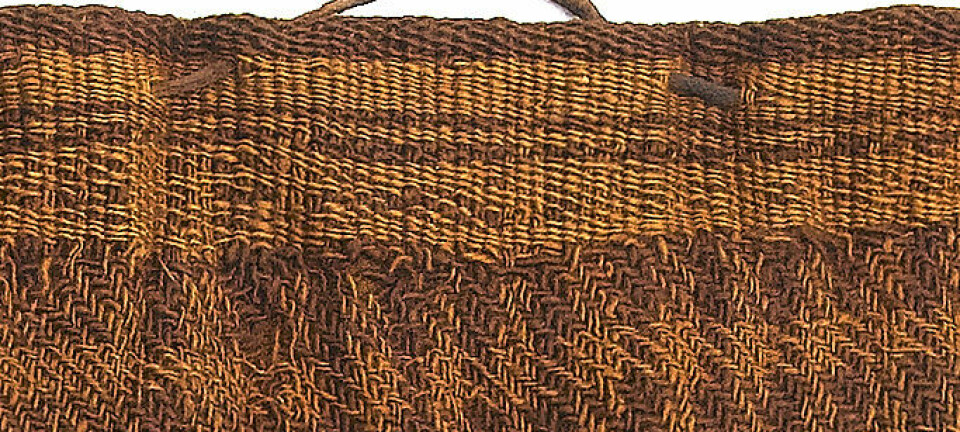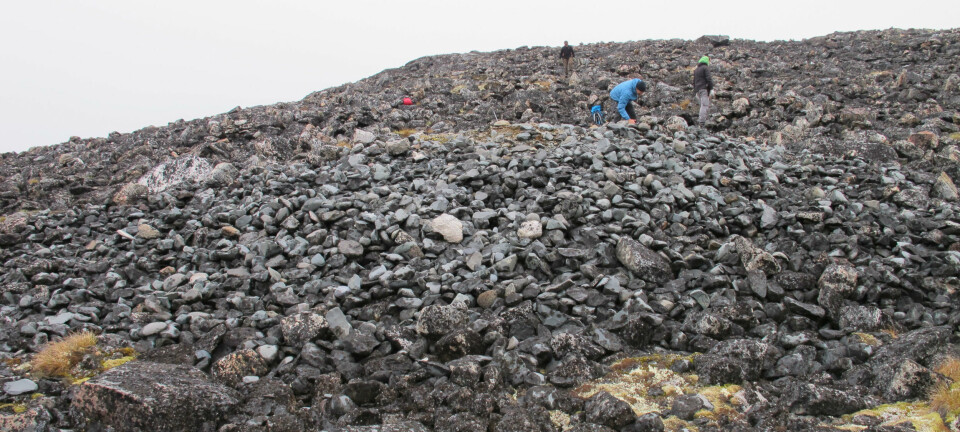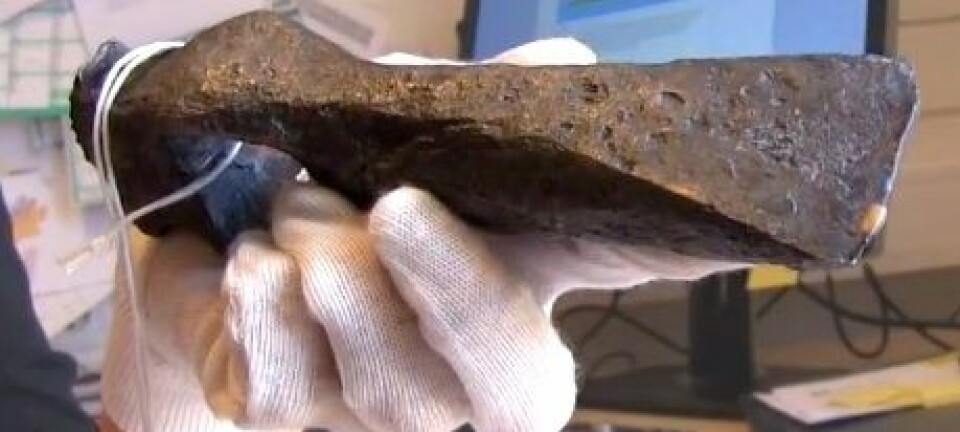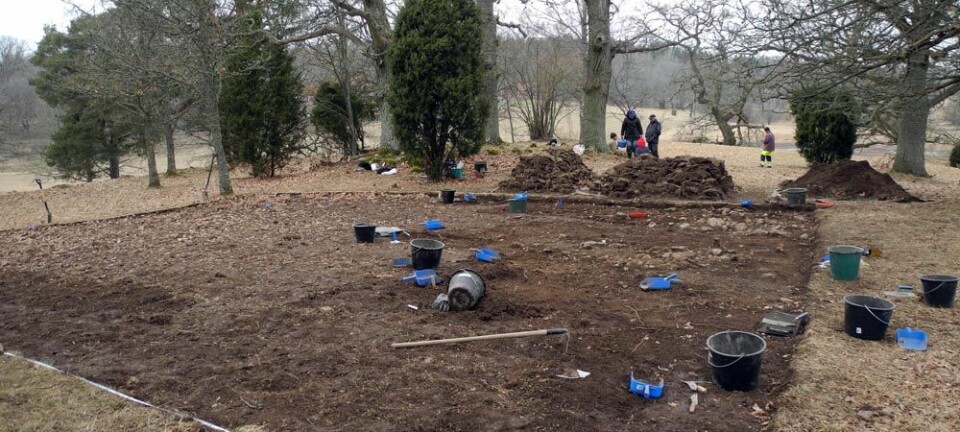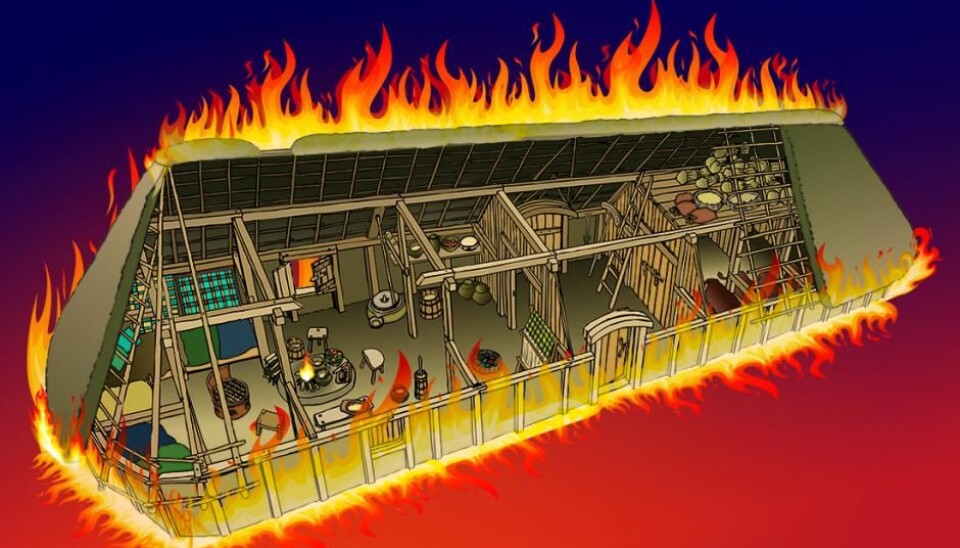
Burnt down Iron Age house discovered in Denmark
Scorched layers of earth have protected the site for almost 2,000 years, which is now helping archaeologists to form a better understanding of life in the Iron Age.
Archaeologists do not know whether the house fire was an accident or if it was started deliberately. But regardless of how it started, it was fierce.
“Virtually nothing survived,” says Mikkel Kieldsen, an archaeologist with Viborg Museum, Denmark.
“They would have had to leave everything behind as it was. We don’t know exactly what happened, but there’s no doubt that it was a catastrophe for the family who lived there,” he says.
Kieldsen is leading the excavation of the burnt out Iron Age house on a hill near Viborg in west Denmark.

Read More: New method reveals the secrets of bog bodies
Pottery shards sparked investigation
The museum stumbled upon traces of the 2,000-year-old family tragedy by accident.
“Six months ago, a boy came in with some shards of pottery that were clearly from the Iron Age. But there was no trace of fire on them, so we thought it was a grave in a field that had been ploughed,” says Kieldsen.
“But then last year, some shards showed up with traces of fire on them. So with that, we thought that it might come from the remnants of a house,” he says.

The museum archaeologists dug a test excavation and discovered that they were right. In October, they began a full scale excavation of the burnt down house.
The house was larger than the typical Iron Age home, at 18 metres long by 5.5 metres wide. It would have had a great view of the farm with close proximity to water.
Read More: Archaeologists discover a Viking toolbox
People and animals escaped
“It was probably a regular family that lived here. The size of the house indicates that there were between seven and ten family members with living quarters in the west and animals in the east. The length of the house could indicate that they had more animals than is usual,” says Kieldsen.
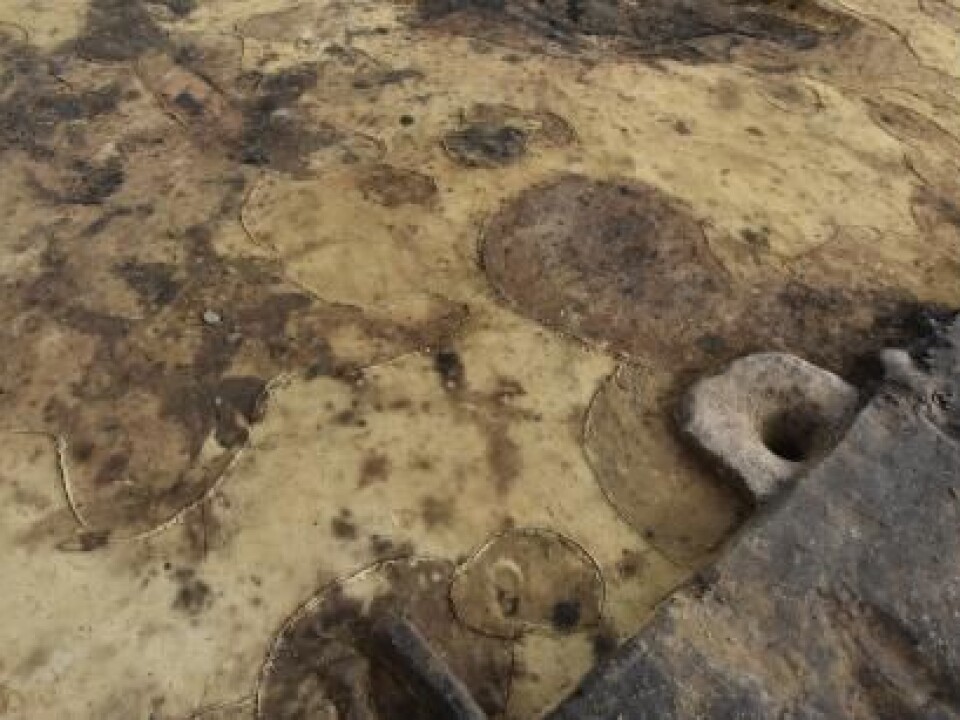
The house probably burnt down during the summer, and the animals were the only thing that they managed to save.
“There are no traces of burnt animals or people in the house, and we would’ve found them if they were there. If it was the summer, then the animals were probably out in the fields. If it was in winter, then perhaps they got them out,” says Kieldsen.
Remnants of old animal stalls were uncovered in the eastern end of the house.
“The stalls were 80 to 90 centimetres wide, and for smaller animals than we have today. They might’ve been goats or pigs,” he says.
Read More: Archaeologists unearth 2000-year-old Iron Age sacrifices
Inhabitants made a speedy evacuation
The inhabitants’ speedy escape strikes the archaeologists as they excavate.
“When you stand here, you come very close to the people who once lived in the house,” says Kieldsen.
“You can see precisely where their ceramics once stood with their contents. Next to the stone mortar there’s a container, which is now broken. They’ve stood and crushed ingredients in the stone and then placed it in the container, which then went into the fireplace,” he says.
The fire was a tragedy for the family who once lived there, but it is a gift to archaeologists. The scorched layers of earth have protected the site for almost 2,000 years.
“Without the fire, we couldn’t have seen these unique details. It preserved the house exactly as it was used in the Iron Age. The details bring us closer to the Iron Age interior and architecture,” says Kieldsen.
------------
Read the Danish version of this story on Videnskab.dk
Translated by: Catherine Jex
